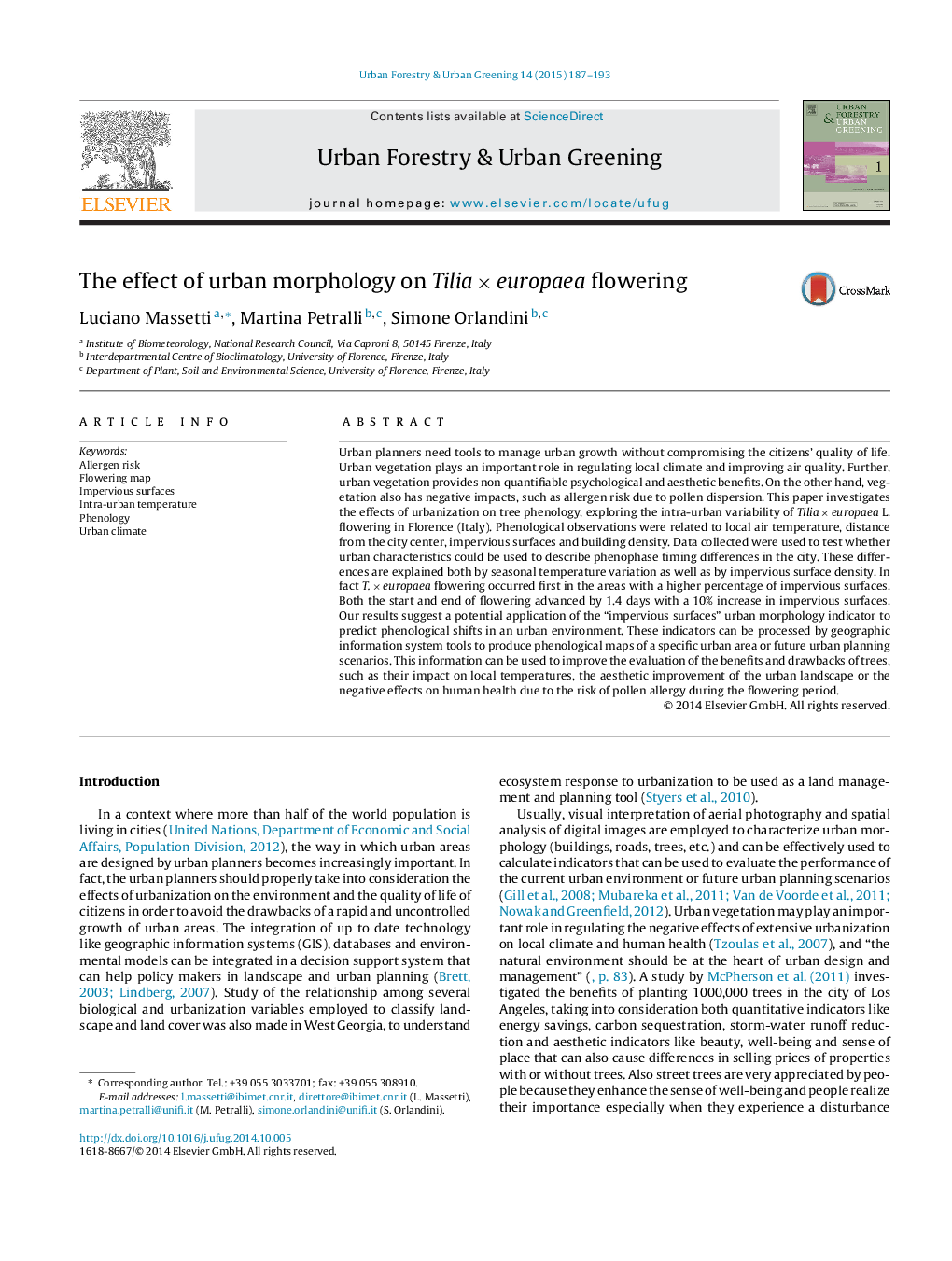| Article ID | Journal | Published Year | Pages | File Type |
|---|---|---|---|---|
| 10252248 | Urban Forestry & Urban Greening | 2015 | 7 Pages |
Abstract
Urban planners need tools to manage urban growth without compromising the citizens' quality of life. Urban vegetation plays an important role in regulating local climate and improving air quality. Further, urban vegetation provides non quantifiable psychological and aesthetic benefits. On the other hand, vegetation also has negative impacts, such as allergen risk due to pollen dispersion. This paper investigates the effects of urbanization on tree phenology, exploring the intra-urban variability of Tilia Ã europaea L. flowering in Florence (Italy). Phenological observations were related to local air temperature, distance from the city center, impervious surfaces and building density. Data collected were used to test whether urban characteristics could be used to describe phenophase timing differences in the city. These differences are explained both by seasonal temperature variation as well as by impervious surface density. In fact T. Ã europaea flowering occurred first in the areas with a higher percentage of impervious surfaces. Both the start and end of flowering advanced by 1.4 days with a 10% increase in impervious surfaces. Our results suggest a potential application of the “impervious surfaces” urban morphology indicator to predict phenological shifts in an urban environment. These indicators can be processed by geographic information system tools to produce phenological maps of a specific urban area or future urban planning scenarios. This information can be used to improve the evaluation of the benefits and drawbacks of trees, such as their impact on local temperatures, the aesthetic improvement of the urban landscape or the negative effects on human health due to the risk of pollen allergy during the flowering period.
Related Topics
Life Sciences
Agricultural and Biological Sciences
Forestry
Authors
Luciano Massetti, Martina Petralli, Simone Orlandini,
